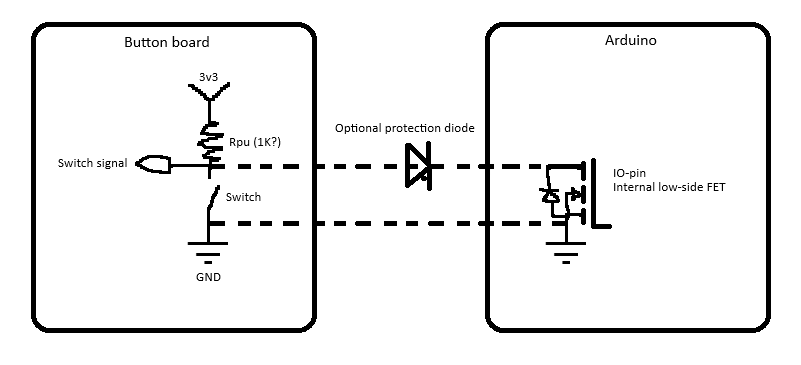-
Posts
1,073 -
Joined
Awards
This user doesn't have any awards
About Mojo-Jojo
- Birthday Oct 03, 1992
Profile Information
-
Gender
Male
-
Location
Netherlands
-
Interests
Electronics Engineering and Software Engineering. Casual gaming, on both PC and console. High-intensity cardio training. I'm a heart-rate junkie. Also play tennis.
-
Occupation
Product Engineer - PCB/Software
System
-
CPU
AMD Ryzen 5 5600x
-
Motherboard
Gigabyte B550 AORUS ELITE AX V2
-
RAM
G.Skill Trident Z Neo F4 2x16GB 3600 RGB
-
GPU
Gigabyte GeForce RTX 3070 Eagle OC 8G (rev. 2.0)
-
Case
NZXT H510 Flow B/W
-
Storage
Samsung 970 Evo Plus 250GB M.2
Kingston A2000 500GB M.2
NAS 4x WD40EFZX 4TB in Raid 5 -
PSU
Seasonic Focus GX-850
-
Display(s)
3x Acer KG241Q
-
Cooling
NZXT Kraken X63
Recent Profile Visitors
The recent visitors block is disabled and is not being shown to other users.
Mojo-Jojo's Achievements
-

Lamptron caught mass selling invalid AIDA64 keys
Mojo-Jojo replied to CoolJosh3k's topic in Tech News
Our neighbours in Germany usually have pretty similar laws to us (Netherlands). That being said. Here if you buy something that happens to be stolen or illegally obtained, but you yourself paid for it in good faith, you are not at fault. Good faith is an important clue here. If you have no suspicion whatsoever, and the price seems reasonable, then you cannot be charged for any crime. Worst case you'll have to spend some time to explain the situation to the police. However, if you're buying stuff and you know the price is too good to be true, i.e. grey market license keys, or a $5 bicycle with a destroyed lock, that's where good faith ends and lawful pursuit begins. So long story short, it all depends on the intent here. Like you said. -
They tried a single stick as a troubleshooting step already, which passed testing using MetTest86 before using it. I second using another SSD/HDD just as a testing step. Maybe try reseating the drive/connectors as well. It might (even though filesystem and drive should correct errors) be that something is somehow ending up corrupt on the drive and causing weird stuff to happen.
-
Looks like you've tried a lot already, all good and valid troubleshooting steps. What I'd try at this point (In order): - BIOS update. I've seen some BIOS updates for your motherboard that mention compatibility & stability improvements. - If that doesn't work (or you're already up to date), I'd reseat the CPU (and inspect socket) - If that doesn't work, I'd try a stick of lower-clocked RAM. - If that doesn't work, I'd try a different power supply After that, I think the only possible leftover explanation is a defective CPU. Although I've personally never seen that before, it happens.
-
Since you mention that the analog port works fine, I think you're looking at an issue with your USB ports in general or the headset in particular. Most PC's share USB ports on a single or maybe two controllers. You said you've tried different ports, but they may all be sharing the single controller. Once that controller is busy with something else (internal Bluetooth or WiFi maybe?) it might not communicate in time with your headset resulting in audio problems. What you could try is buying a dedicated PCIe to USB add-in card, effectively dedicating an extra USB controller to your headset. I'm not certain it would fix things, but if you buy at a store with a good return policy, it shouldn't hurt to try.
-

Wanting to upgrade from a 3060 laptop to 40 series
Mojo-Jojo replied to msponer's topic in Laptops and Pre-Built Systems
Pulse should be good. As far as I can find on their site, the GPU can take up to 140W, so it's a "full-power" design rather than a neutered 4070 for laptops. -
The motherboard traces, the substrate traces, pins and bonding wires will all have their limits. The thermal interface material will have some thermal resistance as well. So yes, there are many limits.
-
This would be more complicated. You're probably looking at some sort of PWM signal, an analog control value would be quite rare these days so I suspect a resistor divider wouldn't work. You'd have to reverse engineer exactly what the control signal is and then reproduce. But it should be possible, given the proper tools to do it.
-
Personally I think using a relay is overkill and overcomplicated for the task. It requires more discrete components and more power. You need to deal with induction spikes and the added benefit (bidirectional current) doesn't add anything to the application. It's a valid method, but I don't think it's suitable for OP's project per se. Solid state relay is a nice choice.
-
As a very crude schematic, this will work. If you couple both boards' GND, you can pull the switch signal down directly using the Arduino's IO-pin by driving it low. You can include a protection diode that prevents you from driving the switch signal high with your Arduino, but personally I'd say that once you finish experimentation, the chances of accidentally driving a pin high are... low so it's optional. This way, you can safely complete the current path for the switch signal to GND using both the button and the Arduino IO pin. No optocouplers necessary. There are upsides to optocouplers, which include galvanic isolation. This is useful if you have high voltage or current spikes. I doubt that will be the case in this system. I also think driving the optocoupler will cost more current than to just sink the current directly.
-
A button is usually pulled up with a high-value resistor, say 1k or more. If the button is sourced by 3.3V, at most you would be dealing with 3.3 mA. The Arduino microcontroller should easily be able to handle at least 10 or 15 mA sinking current per pin. All you'd need to do is sink the current through a low IO pin and couple the Arduino's GND to the button board's GND. The button will also still work this way.
-

None filtered camera app for phone?
Mojo-Jojo replied to Edward78's topic in Programs, Apps and Websites
Makes sense. I was looking for Nine in app stores and thinking it was a special camera app of some sort. Your question is still too broad. How are you taking pictures now, in what way are they filtered and how is that a problem? -

None filtered camera app for phone?
Mojo-Jojo replied to Edward78's topic in Programs, Apps and Websites
I have absolutely no idea what's going on.









.png)

